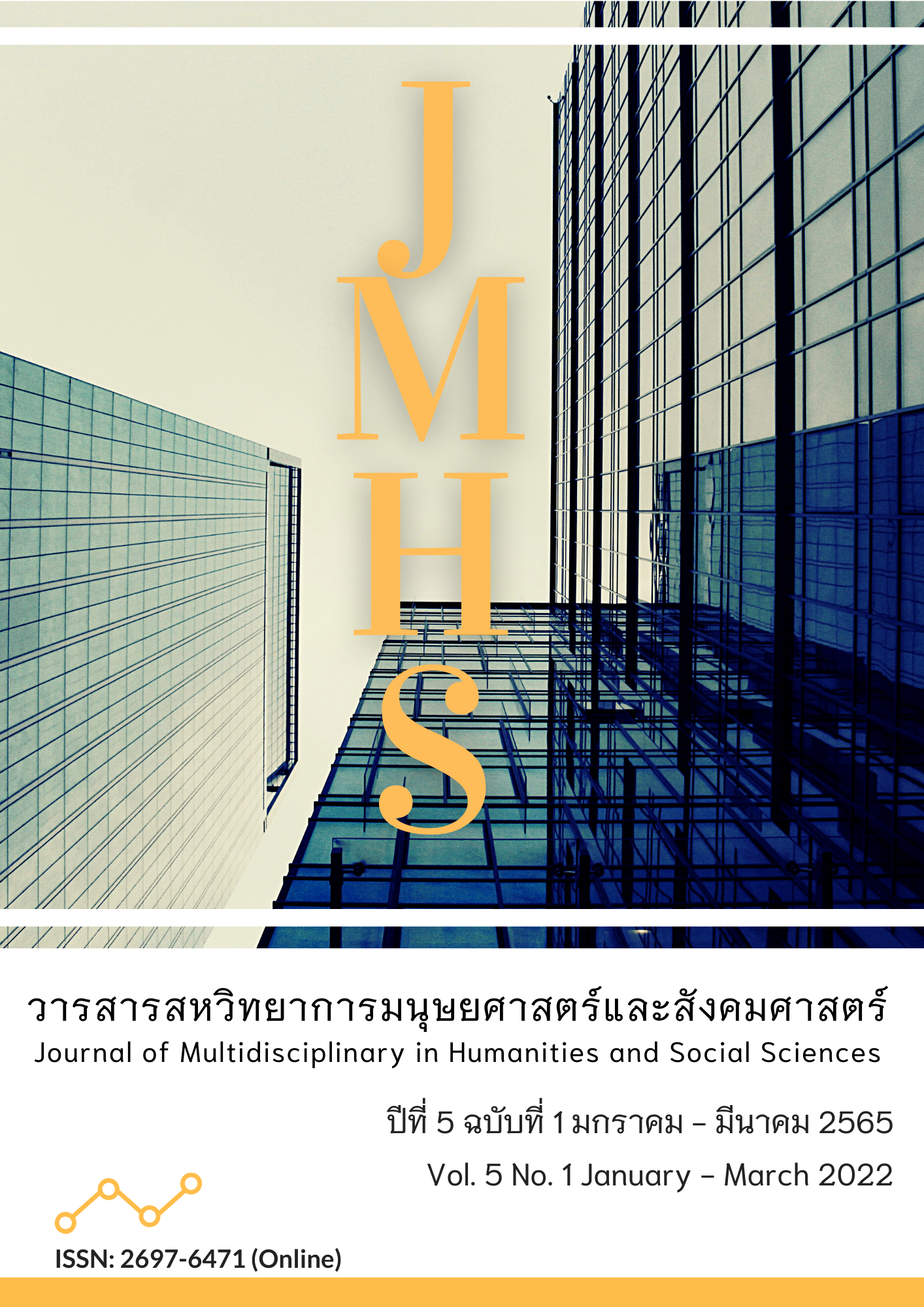A Study of Asubhakammatthana as the Base of Vipassanabhavana
Main Article Content
Abstract
The objectives of this article were to study 1) Asubha meditation in the Theravada Buddhist scriptures; 2) Vipassana meditation practice in the Theravada Buddhist scriptures; and 3) Asubha or dirty as a base of vipassana practice. It was qualitative research by collecting data from Theravada Buddhist scriptures and documents related to it. All the data had been concluded, analyzed, and compiled in descriptive style. The results of the research revealed that 1) Asubha meditation refers to meditation using undesirable corpses as the object of contemplation. It objects the sensual desire, causing boredom and eliminating lust in body clinging. It consists of 10 themes. This type of meditation appears in both Vinaya and Dhamma. For example, Mahakala Bhikkhu examined this corpse meditation, observing the sole body starting from the feet up to the ends of the hair, and finally he attained Arahatship. 2) Vipassanābhāvanā or insight development contains the truth realization as its characteristics, ignorance abandoning as its function, complete understanding of all Dhammas as a result, concentration as the closely cause, having wisdom consciousness as the body, Khandha, Āyanata, Dhātu, Indriya, Ariyasacca and Paṭiccasamuppāda as contemplated objects. 3) The corpse contemplation for insight cultivation contains 10 types of practice, for example, Uddhumātaka-asubha meditation or observing the swelled corpses as objects of Samatha, etc. With skillfulness in entering and exiting the first trance, the practitioner will go up to the next higher level of observation. After completing all the steps of absorption, Uddhumātaka-asubha meditation will be used for further insight practice by taking corpse observing as the base for practicing Vipassana until the practitioner can attain the Four Paths, Four Fruits, and Nibbana, respectively.
Article Details

This work is licensed under a Creative Commons Attribution-NonCommercial-NoDerivatives 4.0 International License.
Views and opinions appearing in the Journal it is the responsibility of the author of the article, and does not constitute the view and responsibility of the editorial team.
References
จิรพร ชีวะธรรมและ อุทัย สติมั่น. (2564). วิเคราะห์การพัฒนาชีวิตตามหลักธรรมที่ปรากฏในพระไตรปิฎก. วารสาร มจร บาฬีศึกษาพุทธโฆสปริทรรศน์, 7(1), 96-106.
ฉันทนา อุตสาหลักษณ์. (2545).พุทธปัญญา คู่มือการสร้างปัญญา. กรุงเทพฯ: ธรรมสาร.
พระครูปลัดณัฐพล จนฺทิโก. (2561). การปรับจริตเพื่อพัฒนาชีวิต: กระบวนการ และแนวปฏิบัติ. วารสารปณิธาน, 14(1), 55-84.
พระพรหมคุณาภรณ์ (ป. อ. ปยุตฺโต). (2554). พจนานุกรมพุทธศาสน์ ฉบับประมวลศัพท์. (พิมพ์ครั้งที่ 16). กรุงเทพฯ: สหธรรมิก.
พระพุทธโฆสเถระ. (2548). คัมภีร์วิสุทธิมรรค. (สมเด็จพระพุฒาจารย์ (อาจ อาสภมหาเถระ), ผู้แปล). (พิมพ์ครั้งที่ 6). กรุงเทพฯ: ธนาเพรส.
พระมหากิตติณัฏฐ์ สุกิตฺติเมธี. (2564). การวิเคราะห์แนวทางงดเว้นจากความเสื่อมในปราภวสูตร. วารสารสหวิทยาการมนุษยศาสตร์และสังคมศาสตร์, 4(1), 84-95.
พระมหาสุบิน สุนฺทรธมฺโม และพระมหาบุญศรี ญาณวุฑฺโฒ. (2564). ศึกษาการปฏิบัติวิปัสสนาภาวนาในอัจฉราสูตร. วารสาร มจร บาฬีศึกษาพุทธโฆสปริทรรศน์, 7(1), 123-134.
พระรุ่งธรรม โชติธมฺโม. (2564). แนวทางการปรับใช้หลักจิตตานุปัสสนาสติปัฎฐานในการแก้ปัญหาความเครียดผู้สูงอายุของศูนย์ดูแลผู้สูงอายุขอนแก่นเนอร์สซิ่งโฮม. วารสารสหวิทยาการมนุษยศาสตร์และสังคมศาสตร์, 4(2), 417-428.
พระสมชาย บัวแก้ว, พระมหาบุญศรี วงค์แก้ว และ สุเชาวน์ พลอยชุม. (2564). อภิสมาจาร: กระบวนการพัฒนาบุคลิกภาพตามแนวพระพุทธศาสนา. วารสารศิลปการจัดการ, 5(3), 895-907.
พระอนุรุทธะ และพระญาณธชะ. (2546). อภิธัมมัตถสังคหะและปรมัตถทีปนี. (พระคันธสาราภิวงศ์, ผู้แปล). กรุงเทพฯ: ไทยรายวันกราฟฟิคเพลท.
มหาจุฬาลงกรณราชวิทยาลัย. (2539). พระไตรปิฎกภาษาไทย ฉบับมหาจุฬาลงกรณราชวิทยาลัย. กรุงเทพฯ: โรงพิมพ์มหาจุฬาลงกรณราชวิทยาลัย.
มหาจุฬาลงกรณราชวิทยาลัย. (2552). อรรถกถาภาษาไทย ฉบับมหาจุฬาลงกรณราชวิทยาลัย. กรุงเทพฯ: โรงพิมพ์มหาจุฬาลงกรณราชวิทยาลัย.


